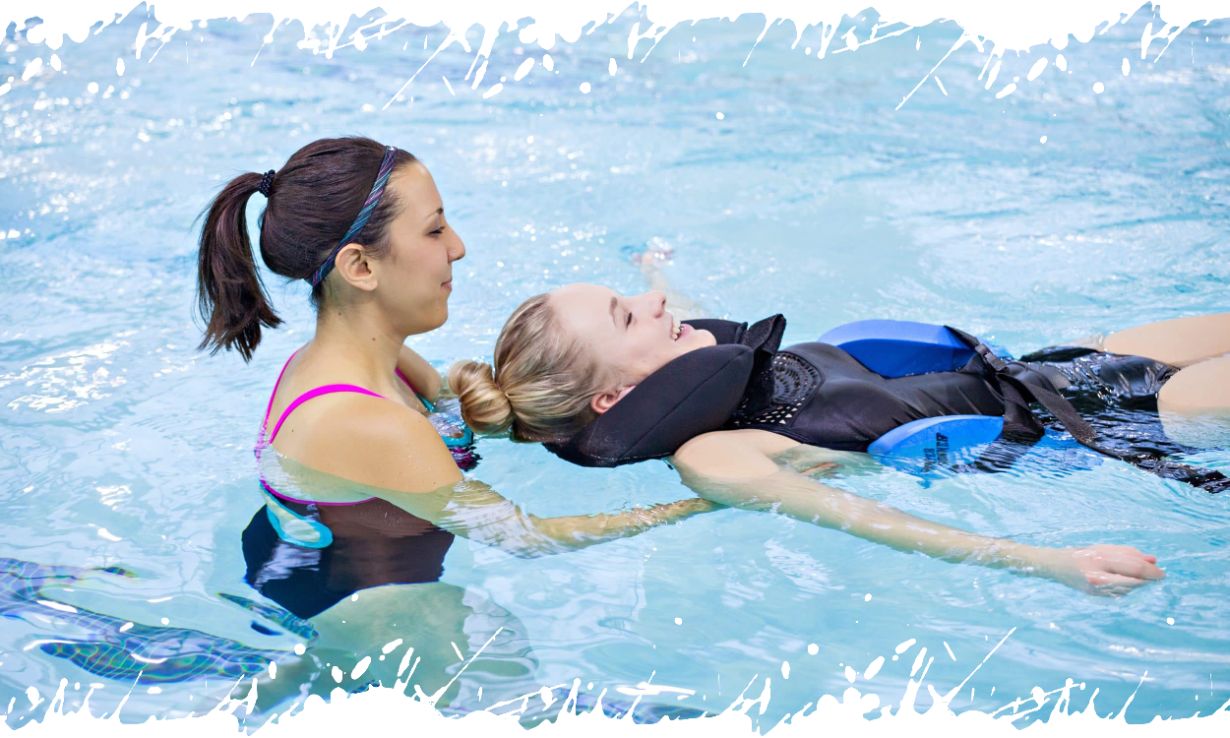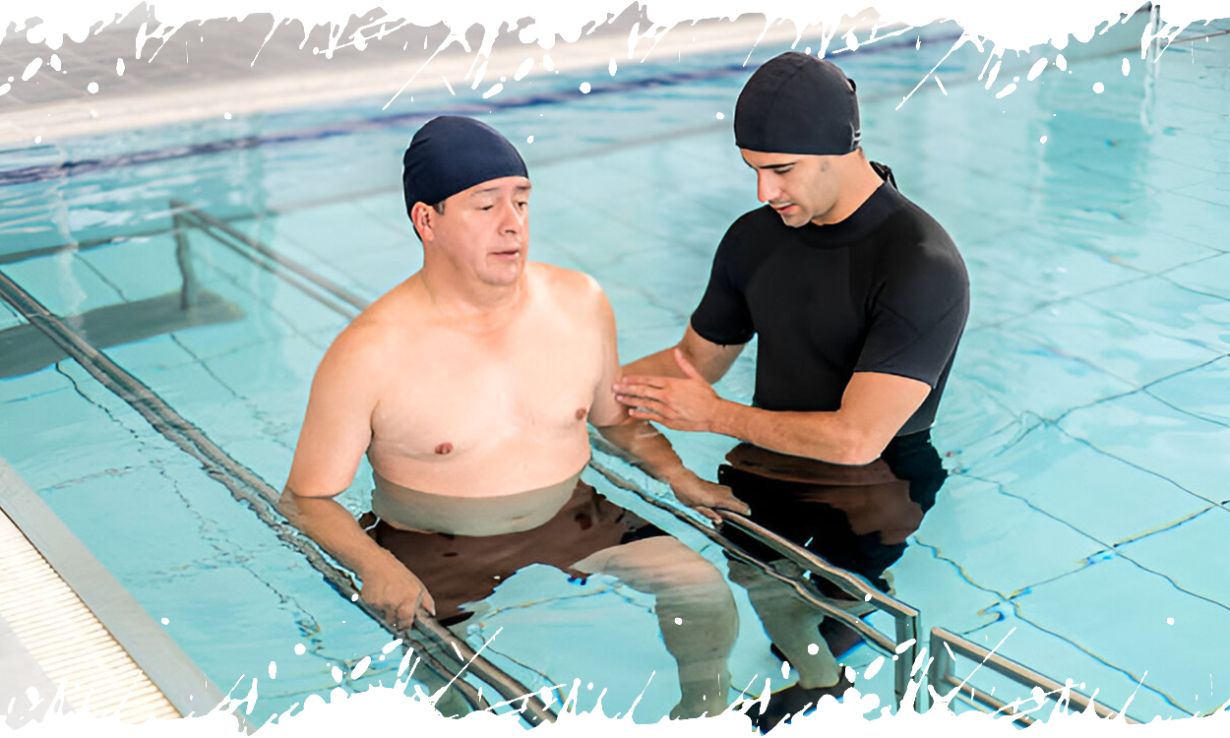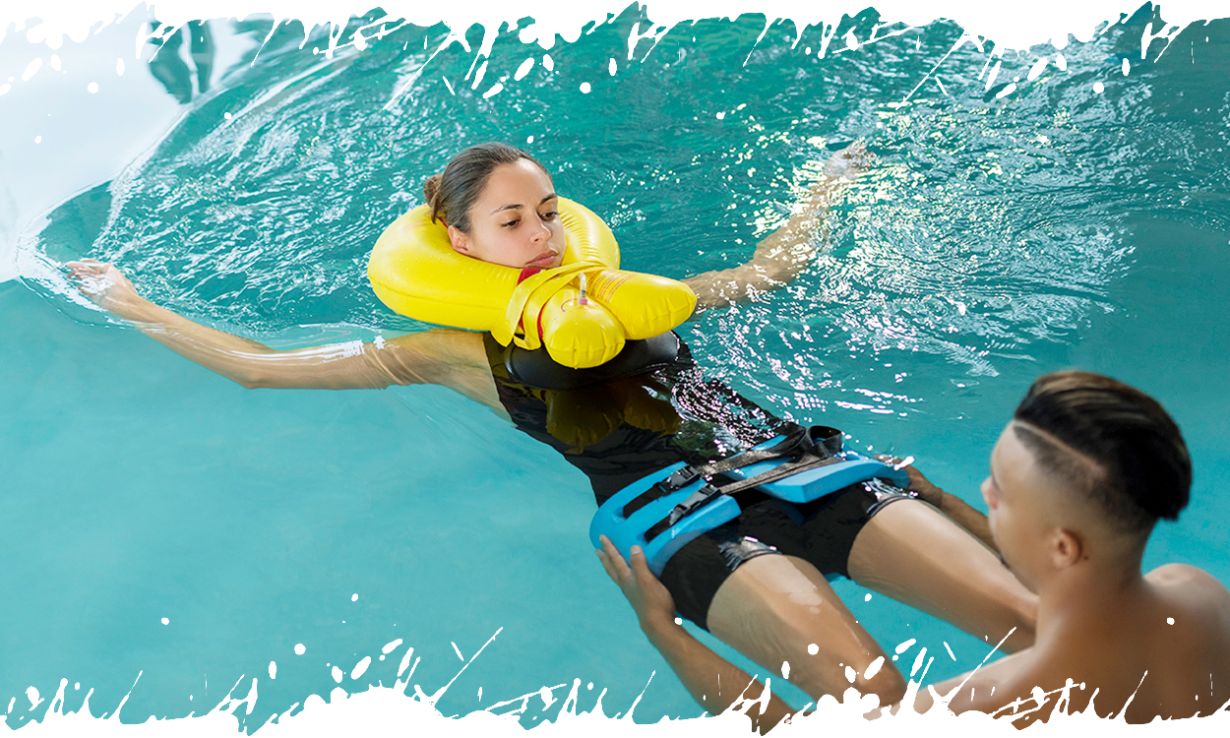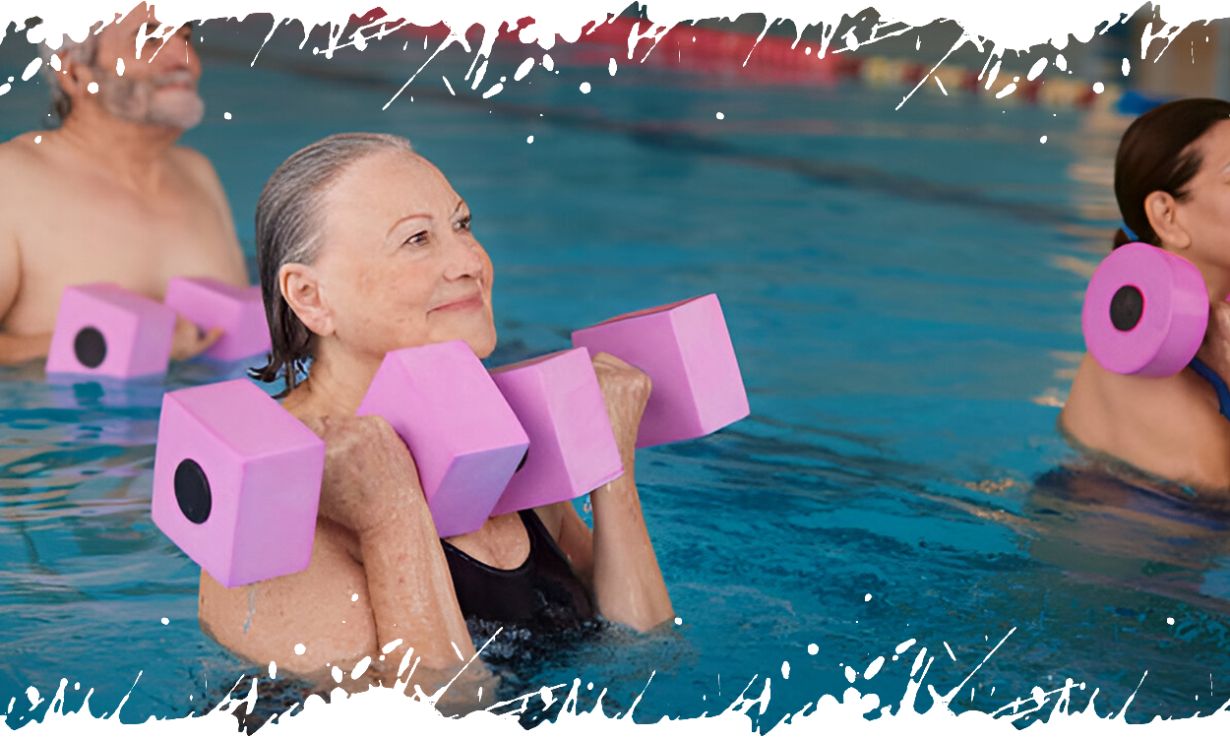
Hydrotherapy
Swim
Lessons
Welcome to the Swimming Training Section for Hydrotherapy. In this section, our program is designed for injury rehabilitation and providing therapeutic aquatic exercises. We are here to help you recover from injuries, improve your physical fitness, and enhance your overall health through the therapeutic benefits of water.

16 benefits of swimming for Adults Women and more:
- Enhancing blood flow to the tissues using warm water.
- Reducing swelling is done with cold water to decrease inflammation.
- Alleviating pain is achieved through floating in water to reduce pressure on the joints.
- Promoting relaxation occurs by floating in warm water to calm the nervous system.
- Increasing body flexibility is achieved by improving muscle and joint flexibility through hydrotherapy.
- Enhancing balance is made possible by improving coordination through hydrotherapy.
- Strengthening muscles happens thanks to the natural resistance of water, which enhances muscle strength without excessive strain.
- Accelerating healing is achieved through hydrotherapy, which speeds up the recovery process after injuries.
- Improving mood is facilitated by relaxing in water to reduce anxiety.
- Enhancing heart health is achieved by improving cardiovascular functions using hydrotherapy.
- Boosting breathing is achieved by improving breath and increasing lung capacity while floating in water.
- Improving sleep quality happens thanks to the soothing effects of hydrotherapy.
- Reducing muscle tension is achieved by warm water, which helps to relax the muscles
- Enhancing neurological functions occurs through improved motor coordination using hydrotherapy.
- Promoting psychological recovery is facilitated by hydrotherapy, which helps reduce stress and enhance psychological recovery.

In this section, you will learn:
- Injury Rehabilitation Techniques: How to use water to speed up the healing process and rehabilitate injuries.
- Therapeutic Aquatic Exercises: Techniques for exercises that help improve strength and flexibility.
- Improving Circulation: How to enhance blood flow to tissues using hydrotherapy.
- Pain Management: Strategies for alleviating pain through floating and aquatic exercises.
- Promoting Relaxation: Techniques for relaxation and stress reduction through hydrotherapy.
- Enhancing Flexibility: How to increase muscle and joint flexibility using hydrotherapy.
- Improving Balance: Methods for enhancing balance and motor coordination through water exercises.
- Strengthening Muscles: How to use water resistance to strengthen muscles without excessive strain.
- Improving Heart Health: Strategies for improving cardiovascular functions through aquatic exercises.

Training curriculum
When designing a hydrotherapy program, our approach focuses on accurately assessing participants’ health to provide a customized treatment plan. This plan includes a variety of techniques such as floating, aquatic massage, and specific exercises aimed at improving strength, flexibility, and balance. We also emphasize the use of pain management strategies and breathing enhancement to improve therapeutic outcomes.
- Health Assessment: Evaluating the overall health of the patient or client, including injury history and current physical condition.
- Therapeutic Program Planning: Designing a customized aquatic program based on the individual’s needs and treatment goals, such as rehabilitation, strength improvement, or relaxation.
- Hydrotherapy Techniques: Learning various techniques such as floating, aquatic massage, and using different types of water (warm, cold, contrasting temperatures).
- Aquatic Exercises: Training on a range of exercises that help improve strength, flexibility, and balance, focusing on water exercises suitable for the client’s condition.
- Pain Management: Strategies for alleviating pain through effective use of water.
- Breathing Techniques: Techniques to improve breathing and increase lung capacity during water exercises.
- Monitoring and Evaluation: Tracking the client’s progress and evaluating the effectiveness of the therapeutic program, making necessary adjustments.
- Guidance and Coaching: Providing clients with instructions on how to perform exercises correctly in water and maximize the benefits of the therapy.
By following this curriculum, participants will achieve effective results in hydrotherapy and gain the knowledge and skills necessary to improve strength, flexibility, and balance. This comprehensive approach ensures maximizing the benefits of hydrotherapy and enhances overall health and well-being for participants.

Benefits of Home Swimming Training:
- Flexible and Convenient Schedule:
You can arrange your lesson schedule according to your personal preferences and availability, without the need to adapt to traditional swim school timetables. - A Comfortable and Familiar Environment:
It allows you to experience training in a private and familiar environment, increasing your comfort and confidence during learning. - Avoid Crowds and Noise:
You avoid the crowds and noise associated with public pools or schools, making your training experience peaceful and focused. - Individual attention and direct guidance:
You will receive personalized attention and direct guidance from the instructor, enhancing your personal progress and facilitating the achievement of your swimming goals. - Saving Time and Effort:
Reduces the time and effort spent traveling to and from public pools, allowing families more time to spend together. - Customized Training Sessions:
The ability to tailor training sessions to better meet swimmers’ needs, such as session duration and educational content. - Boosting Confidence:
Providing a safe and familiar environment that helps swimmers enhance their confidence while learning to swim. - Focus on Safety:
Offering a learning environment free from potential risks associated with public pools. - Avoiding Pollution:
Minimizing exposure to potential water pollution associated with public pools. - Maintaining privacy:
Providing a private and secluded environment for swimming, avoiding exposure to public view in public pools. This is particularly beneficial for women.